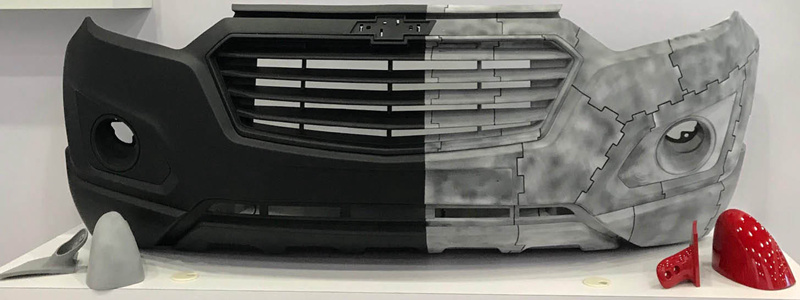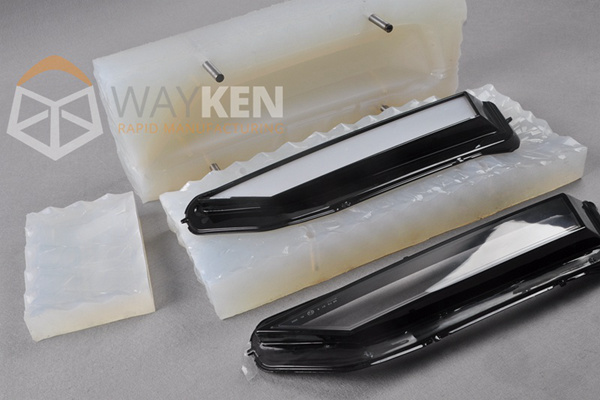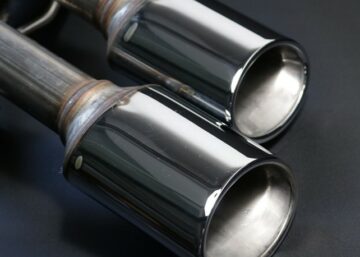As an automotive design engineer, you might have the same experiences as when you are ready to get prototypes for your perfect designs which suits your overall product system very well. You send RFQ to prototype manufacturers, but rather than get an offer quote back. What you get is some news that told you should do design modification again. So, how to avoid to do the modification, or say how to decreasing the modification work for prototype machining? This article will share some practical tips for you in automotive prototype manufacturing.
Common prototyping ways for automotive prototypes include 3D printing, CNC machining, urethane casting, and so on. What are the practical tips for your designs at each process? Let’s take a closer look following.
3D Printing in Automotive Prototyping
3D printing can be used in the initial rapid prototyping for checking the form features and aesthetic appearance of automotive part design. Plastic printed parts are advanced in lower costs and short lead time.
Tips for 3D printed auto prototypes.
1) The material limitation.
Different 3D printing technologies/machines have designated optional materials. For example, the optional material for SLA 3D printing is Photosensitive Resin; for SLS 3D printing is Nylon (PA11 / PA12).
2) The part weight.
The part weight will directly decide the pricing of the part. The larger weight, the higher costs it has. In this case, decreasing the additional wall thickness will be much helpful to lower costs.
3) Metal 3D printing.
At present, although metal 3D printing technology could print automotive parts like aluminum engines. But it is still under development, featured as high costs and poor surface and accuracy quality. However, CNC machining prefers to choose for manufacturing most automotive metal prototypes.
CNC Machining Services for Automotive Prototype
Widely applied in automotive prototypes, CNC Machining is due to its features of high accuracy and variable optional materials. With mature development of CNC machining technology nowadays, from 3-axis, 4-axis, and 5-axis to 9-axis CNC machines. Which are able to respond to the high requirements on the accuracy and part size of automotive prototypes.
Tips for CNC machined auto prototypes.
1) Undercuts.
Undercuts increase the machining difficulties, requiring auxiliary work like custom tools and splitting and gluing process, resulting in high machining risks or longer lead time and high costs. During designing, specially cares on avoid undercuts will be helpful. (Example showed below.)

2) Minimum Radius.
There are two factors that will affect the minimum radius left on the automotive prototypes — minimum tool radius and wall height design. Tool limitation directly depends on the minimum radius it can achieve and wall height affects the depth the tool can achieve. For example, automotive lighting blades will have pillow features for the optical function which usually will be left R0.15-R0.25 radii in inner sharp edges. (Example showed below.)

3) Machined Surface Roughness
For auto parts without aesthetic concerns, the surface finish as machined will be suggested so as to save post-finishing. However, there are still two factors resulting in different machined surface roughness, materials, and rough or fine machining. Rough machining turns out roughly surface and fine machining turn out the nice surface, which depends on the machining time and then affects the machining costs. For material, black plastics should be especially concerned since they are prone to whitening. (Example showed below.)
Urethane Casting for Prototyping Automotive Parts
The best advantage of Urethane Casting is that once the silicone tool is prepared, parts can be cast shortly and the unit cost is much lower than the machined version. One silicone tool is able to produce 15-20units parts usually, suitable for short automotive prototype runs.
Tips for urethane cast auto parts
1) Necessary Quality Compromise
As we all know, the only material use in urethane casting is Polyurethane, which has varied types with similar properties to common plastics, such as Axson PX-5210 similar to PMMA, Hei-cast PU8150 similar to ABS. Unlike the machined part, urethane cast parts have a shorter service life, which is prone to yellowing and has less wear-resistance under a special environment.
2) Color Matching
If plastic automotive prototypes require pigments close to material used in injection molding, urethane casting will be preferred even for one part only. For some automotive lighting prototypes, solid color in the material is critical for its optimal optical function. However, as the pigment is manually controlled, the color matching to custom one is always in a fluctuating range. Therefore, it is common to see the small color difference between different batches.
3) Tool Service life
The service life of all silicone tools is 3 months only. After 3 months, it will become hard and useless. If more parts are needed for future stages, the expired time of the tool should be well noted from the first batch.
Get Started On Your Next Automotive Prototype Project
The above stands for a very small part only in “the Encyclopedia of Prototypes” but it has a general meaning for automotive prototypes. We hope they can work for you when you read this article by chance. Moreover, if you have your own opinion, please do not hesitate to discuss it with us.







